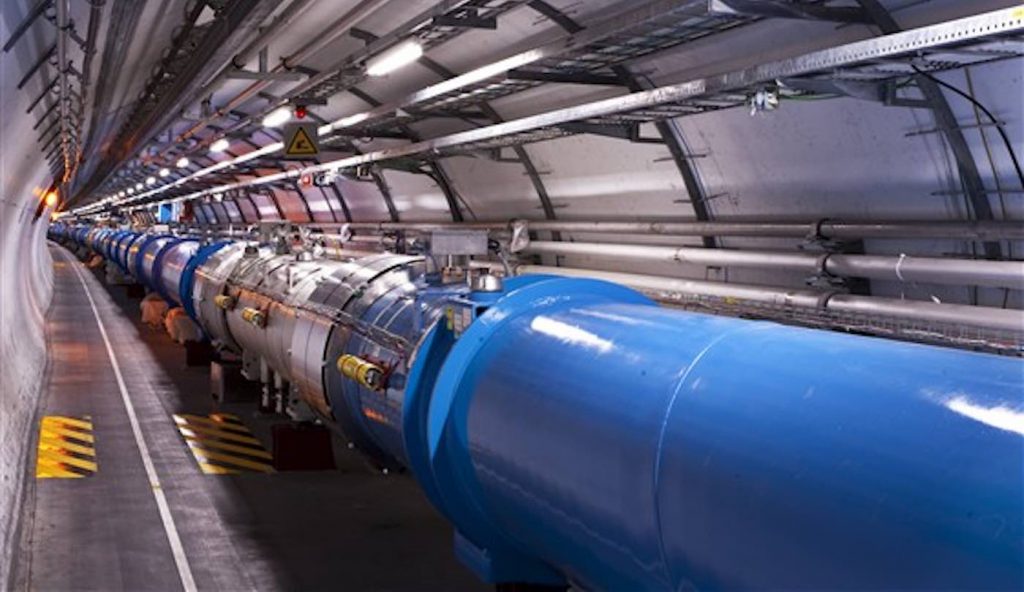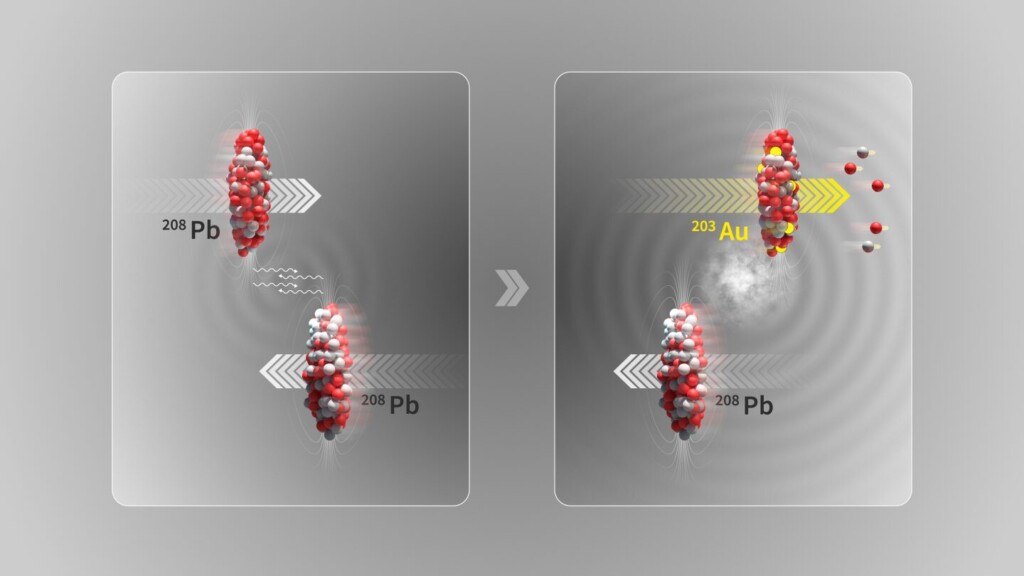 Photo by Maximilien Brice, CC license
Photo by Maximilien Brice, CC licensePhysicists experimenting with a giant particle accelerator accidently proved medieval alchemists right: that base metals could be turned into gold.
While studying electromagnetic disassociation and beam losses, the physicists at CERN’s Large Hadron Collider (LHC) saw that the lead they started with had transformed into approximately 86 billion atoms of gold.
Don’t let the high number fool you—the nugget measured in the picogram range—less than a trillionth of the weight of a paperclip, however the experiment showed that fundamental transformations of metals are possible without smashing particles together at super-high speeds.
Indeed, the experiment was able to shave several protons off of the lead atoms by positioning it so that they just barely missed each other. When this happens, the scientists explain, powerful electromagnetic fields cause them to change into different elements.
Lead contains 82 protons. By losing just 3, it arrives at the atomic number of gold.
The experiment was part of the ALICE Collaboration—a funny acronym that stands for “A Large Ion Collider Experiment.” It’s currently studying quark-gluon plasma, a state of matter difficult if not impossible to observe here on Earth, that is believed to be very close to conditions in the universe during and just after the Big Bang.
 A depiction of how the gold is created – credit CERN released
A depiction of how the gold is created – credit CERN releasedTo summarize the complex theory of quantum chromodynamics, the ALICE team are trying to study why the sub-atomic particles quarks and gluons are always confined together and can’t be observed in isolation.
MORE THEORETICAL PHYSICS: Scientists Identify 7 Stars That Could be Hosting a ‘Dyson Sphere’–the Sci-Fi Concept Turned Realistic Hypothesis
Pursuant to that goal, the ALICE team, comprising almost 2000 scientists from 174 physics institutes in 40 countries, watched as the LHC provided collisions between lead ions, that recreated conditions similar to those just after the Big Bang. Under these extreme conditions, protons and neutrons “melt,” freeing the quarks from their bonds with the gluons.
“It’s impressive that our detectors can handle both major collisions that create thousands of particles and these smaller events that make just a few particles at a time,” Marco Van Leeuwen, who leads the ALICE project, said in a press release.
The collaboration has recently doubled the amount of gold it can produce, which only exists for an instant before breaking apart, and this is the first time they’ve been able to use their ALICE Detector instrument to study the gold they create.
MORE GOLDEN NEWS: ‘Starquakes’ Inside Universe’s Densest Objects May Have Seeded Earth with Large Amounts of Gold
“The results also test and improve theoretical models of electromagnetic dissociation, which, beyond their intrinsic physics interest, are used to understand and predict beam losses that are a major limit on the performance of the LHC and future colliders,” Jowett said in the release.
Turning lead into gold was a recurring theme in alchemy for thousands of years. It continually came up in experiments and writings by alchemists as the ultimate end of any practice. As recently as the 1500s, Caterina Sforza, the Lady of Imola, was experimenting with alchemy and managed to create talc, which, rather than being recognized for its use in protecting babies’ bottoms, was also, inevitably, believed to be capable of turning other metals like silver into gold.
SHARE This Cool Scientific Experiment And Results With Your Friends…
Source link

